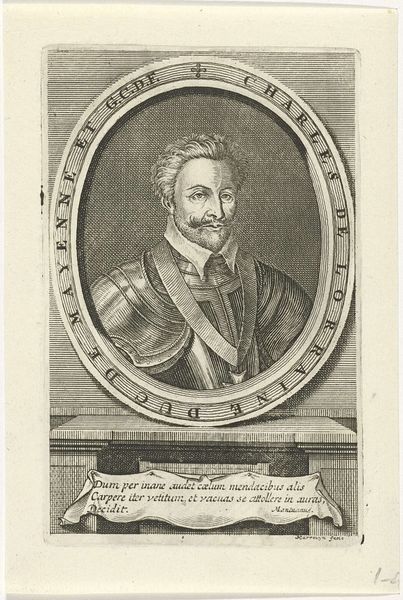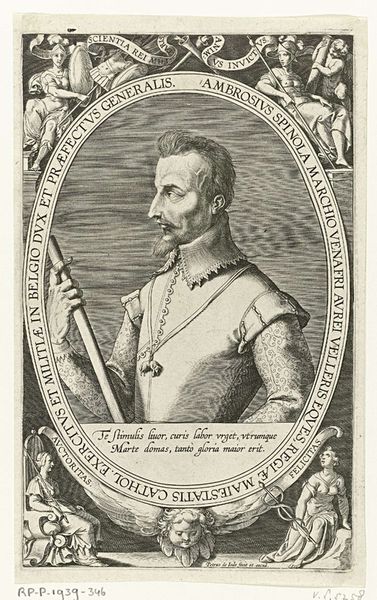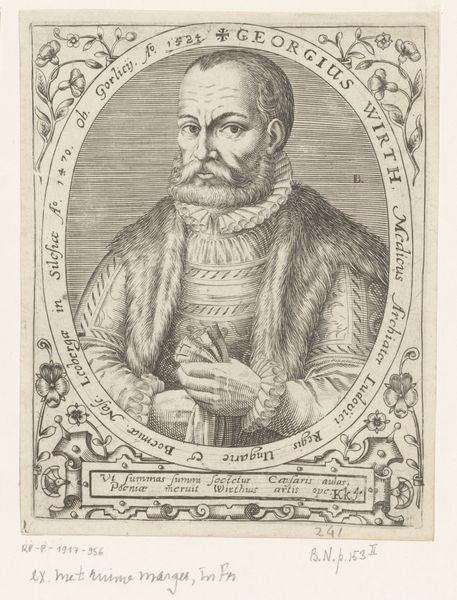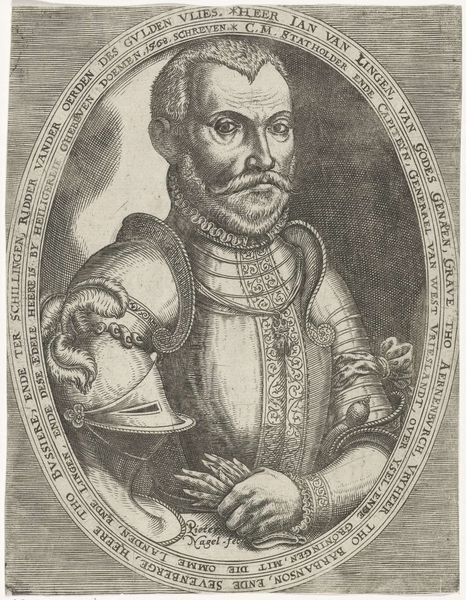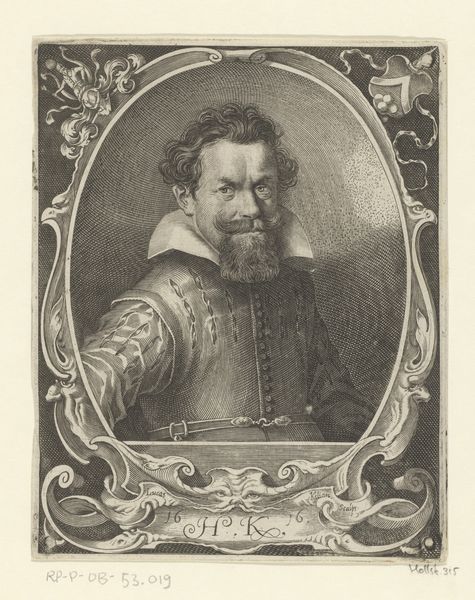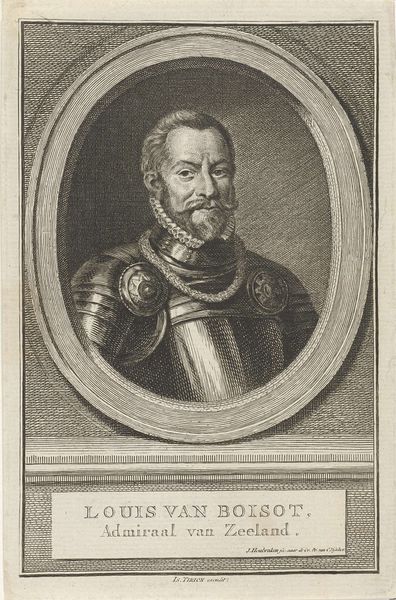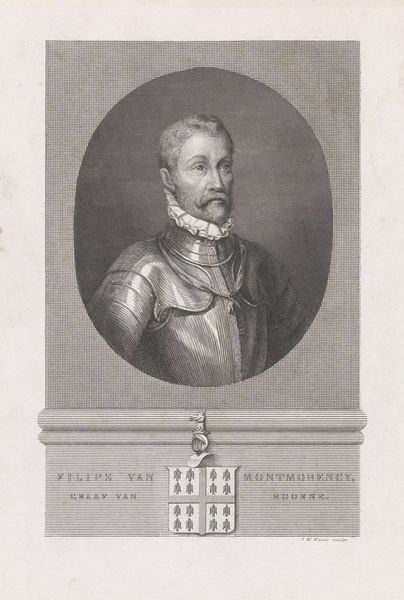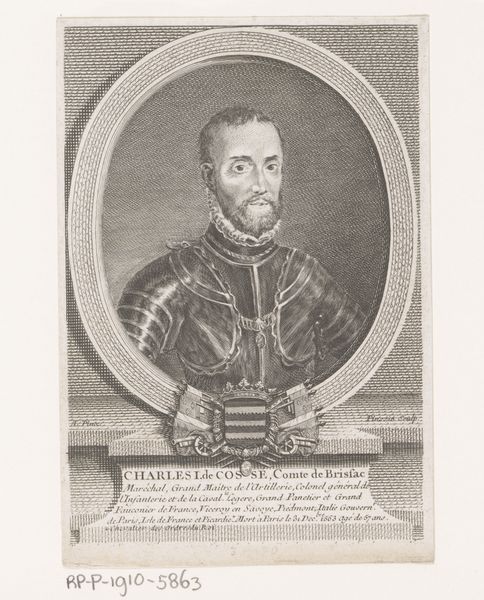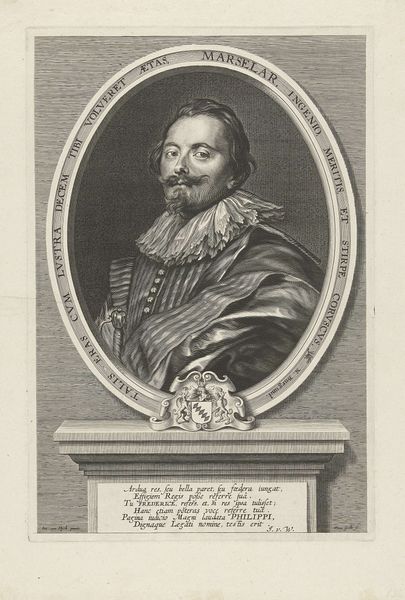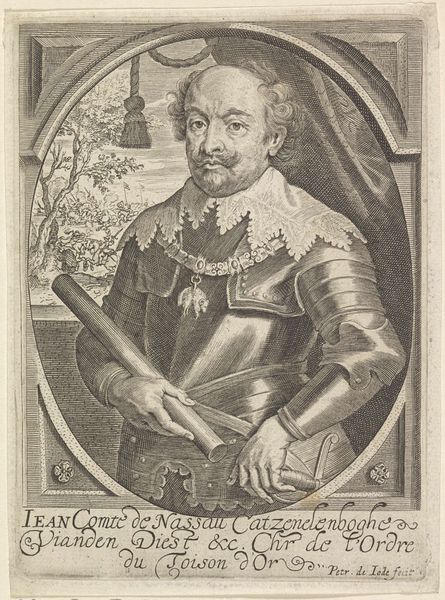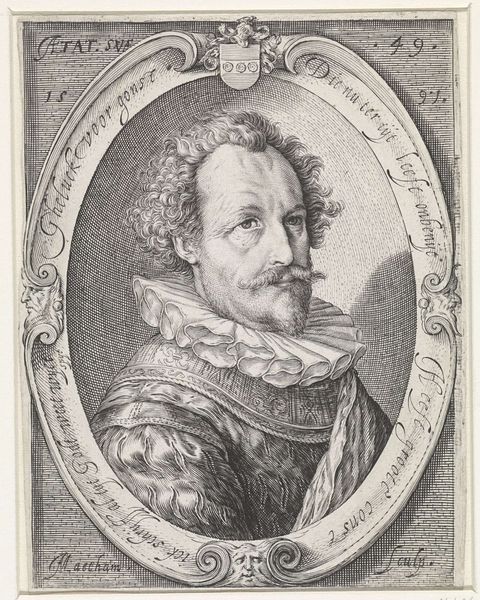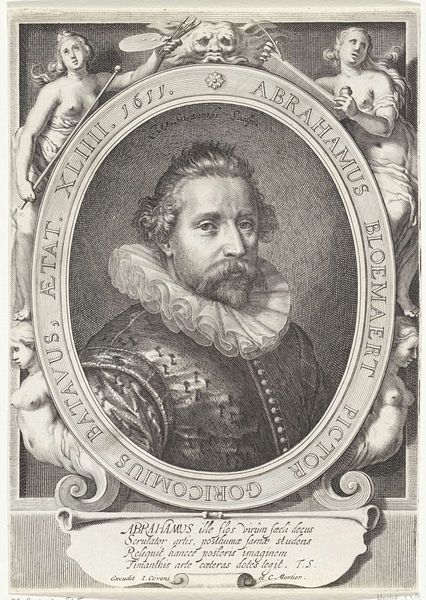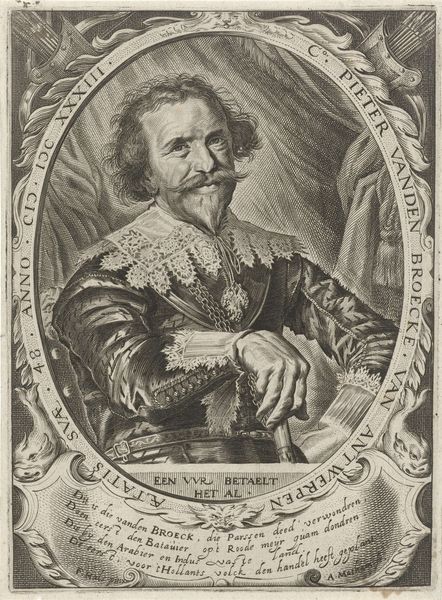
metal, engraving
#
portrait
#
baroque
#
metal
#
old engraving style
#
pencil drawing
#
engraving
Dimensions: height 165 mm, width 118 mm
Copyright: Rijks Museum: Open Domain
Editor: Here we have Pieter de Jode II’s “Portrait of Gaspar de Guzman,” created sometime between 1628 and 1670. It’s an engraving on metal. The sternness of his face is what really stands out to me. How do you interpret this work? Curator: What strikes me is the careful construction of identity evident in this portrait. It’s not simply about representation; it’s a deliberate crafting of power through visual language. We see this Gaspar de Guzman, Duke of Sanlucar, strategically posed within a complex network of social and political meanings. Think about the role portraiture played in solidifying aristocratic power. How does this image contribute to or perhaps even challenge, those hierarchies? Editor: So it's more than just a likeness? Curator: Absolutely. Consider the symbolism inherent in his clothing, the fine lace, and the elaborate sash. Every detail broadcasts wealth and status. But let's also think about the politics of representation at this time. Spain's colonial reach extended globally, impacting countless lives through violence and extraction. How complicit is this portrait in perpetuating those systems? Do you think it confronts or evades accountability? Editor: That's something I hadn't really considered before. I was focused on Guzman as an individual, not within the larger historical context. Curator: Exactly. And consider the artistic process of engraving. Its inherent reproducibility allowed for dissemination of Guzman’s image, effectively solidifying his persona within public consciousness. What effect does mechanical reproduction have on de Guzman's power? Editor: I see. It's like controlling the narrative, ensuring his image and authority circulate widely. Curator: Precisely. By understanding the intersection of art, history, and politics, we can move past simply admiring the aesthetics and confront the powerful messages embedded within these works. Editor: That's fascinating. It makes you realize there’s always a deeper story to uncover if you know how to look. Curator: Indeed. It is our task to pose the questions history might have been afraid to ask.
Comments
No comments
Be the first to comment and join the conversation on the ultimate creative platform.
